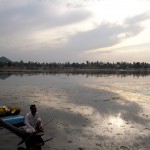IndiaWilds Newsletter Vol. 12 Issue V
ISSN 2394 – 6946
Cyclone On and On
Amphan, Fani, Titli, Ockhi, Hudhud, Phailin are not just any common names. These are the names of nature’s violent forces that we call as cyclones. These cyclones have been battering us in the recent past. In the recent memory, the first time we got really battered under the impact of a Cyclone was in 1999. Termed as Super Cyclone or Catergory 4 Hurricane, it caused untold devastation in Odisha. Not even the worst war fought in recent memory can emulate the virulence of that Super Cyclone 05B. 10,000 people were reported dead. One could see bodies lying everywhere. Houses were blown away. Numerous dead cattle and livestock were the only ones giving company to the dead bodies of people. No man could hold back the tears after watching those sights.
Cyclone Frequency:
Since then we have come a long way. Our capabilities and preparedness to minimize loss of life during such cyclones have improved. However, the frequency of such cyclones have also increased.
Phailin in 2013, Hudhud in 2014 and then cyclones every year since 2017. Cyclone Ockhi in Nov 2017, Cyclone Titli in October 2018, Cyclone Fani in May 2019 and then now Cyclone Amphan in May 2020. We hope the frequency of cyclones don’t increase from once a year to twice a year. Unfortunately, our Earth is facing a human induced Climate Crisis, which is increasing the frequency and intensity of extreme weather events. So our apprehension of more than one cyclonic storm hitting us in the same calendar year is increasingly looking realistic.
A year ago, Cyclone Fani had hit India and Bangladesh in May 2019. However, the landfall and the maximum damage was in Odisha. The highest wind speed of 250 kmph brought blew away doors, windows, roofs and vehicles in a far more realistic manner than doomsday horror films had every portrayed. Some estimates suggest that Cyclone Fani had caused atleast $8.1 billion dollars worth of damages.
After cyclone Fani caused unprecedented havoc, Odisha’s Chief Minister who had ordered evacuation of 1.2 million people had said that this is the rarest of rare case of a cyclone hitting in Summer. It was the first instance of a cyclone hitting Odisha in summer in 43 years and the third in 150 years. However, immediately after a year, again in the same month of May, Cyclone Amphan hit us in May 2020. Though it hit only the northern parts of Odisha, it did lot of damage to Kolkata and Sundarbans in the neighbouring state of West Bengal. Early estimates suggest at least $13.2 Billion dollars of damage in West Bengal alone.
Cyclone in Summer: Abnormal is new Normal
Cyclone Fani in 2019 was termed as an aberration as it was the first cyclone in summer in 43 years. However, with Cyclone Amphan hitting us again in summer, we can no longer ignore it as an aberration. And when we analyse this with the fact that Cyclone Ockhi, in November 2017 was the first severe cyclone in 40 years which travelled almost 2400 kms from Bay of Bengal to Gujarat and killed 365 people, then we realise that something is really serious. Today abnormal has become the new normal. Only the most insane folks can now close their eyes to the reality staring at us – the reality that not all is well with our Planet Earth. Unfortunately, except man, every other species can understand when things go wrong. As the cyclone Amphan was gathering pace in the Bay of Bengal, in Bhubaneshwar suddenly millions of ants were observed to leave behind their nest and climb up the wall. Ants can perceive drop in ambient temperature, pressure and humidity and know that storm and rains are going to lash the city.
We humans don’t have the natural ability to understand impending danger, so atleast we should listen to prediction of scientists.
Loss in Green Cover:
These scientific predictions doesn’t reach the common man. Since the industrial revolution, along with human population explosion, the way of life of people have also changed to a high-carbon lifestyle. Concretization has become the norm. Every individual family is seemingly in a war against nature and are concretising every square inch of space available. People even concretise all the area leaving just the tree. So it becomes difficult for the trees to survive. Percolation of water into the ground also suffers and the trees too suffer. And when there are only a few trees left and all the other spaces are either concretised or converted into lawns, the few remaining trees are sitting ducks in a cyclonic storm. A lot of trees are uprooted during cyclones and this results in substantial reduction in the green cover.
In 2019, Cyclone Fani wrought havoc on the Balukhand wildlife sanctuary in Odisha and many trees were uprooted. During the recent Cyclone Amphan, similarly huge trees were uprooted in many places in Kolkata and in Sundarbans. However, apart from the immediate loss of green cover, the visuals of fallen trees due to storm are widely shared resulting in inducing fear psychosis among people. So people in urban areas are now cutting big trees for fear of falling and destroying their houses. Overall green cover is the casualty.
Reduction in green cover is changing the micro-climate of the area. There is “heat island effect” due to extensive concretization as the air surrounding the concrete buildings are heated up resulting in a heat envelop over the urban areas. Earlier trees and water bodies used to reduce the heat island effect. Now water bodies are vanishing as they are being indiscriminately filled up to make way for buildings. And the trees are being systematically cut off. So the overall temperatures are bound to go up exacerbating the impacts of climate change.
Higher Temperatures:
Nature has been hitting us with increased vehemence as the Earth’s climate has been in boil. Since the industrial revolution days, the increased use of fossil fuels and industrial activities has led to gradual increase in temperatures. This rise in temperatures is causing massive changes in our climate and causing extreme weather events. The Paris Agreement has brought countries to an agreement to limit the rise of global average temperature to below 2 deg centigrade above pre-industrial revolution levels.
According to National Oceanic and Atmospheric Administration (NOAA) “April 2020 also marked the 44th consecutive April and the 424th consecutive month with temperatures, at least nominally, above the 20th century average. Averaged as a whole, the global land and ocean surface temperature for April 2020 was 1.06°C (1.91°F) above the 20th century average of 13.7°C (56.7°F) and the second highest April temperature in the 141-year record. Only April 2016 was warmer at +1.13°C (+2.03°F). The eight warmest Aprils have occurred since 2010. April 2016 and 2020 were the only Aprils that had a global land and ocean surface temperature departure above 1.0°C (1.8°F). The April 2020 value is also tied with December 2019 as the 11th highest monthly temperature departure in the 1,684-monthly record.”
Our ocean temperatures have been rising as well and this is resulting in warmer ocean currents touching the massive icebergs and melting some of the ice in the Arctic. Scientists have found that our wind pattern has changed from the beginning of the century and that is causing ice loss in West Antarctic ice sheet in the Amundsen Sea. https://www.indiawilds.com/diary/indiawilds-newsletter-vol-11-issue-ix/
Some estimates suggest that by 2100 the sea levels will rise by 2 meters.
Sacrificing Environment & Forests:
So the Governments of various countries are supposed to take notice and work towards it. Unfortunately, despite supposed pious intentions and lot of feel good messages during International biodiversity day, wildlife week etc, our Government does nothing to save our nature and environment. In the name of industrial development the Government is sacrificing forests for mining, dams, power plants, and other projects.
In the month of March, MoEF&CC has even modified the Environment Impact Assessment norms for pharmaceutical companies to waive off the EIA requirement in the name of increasing our capability to manufacture medicines in view of the corona virus. As many as 100 projects were immediately permitted and many more will be given permission by September 2020.
Clearly the MoEF&CC, which is the ministry meant to protect our environment and forests and ensure that we get saved from climate change has decided to wage a war against its basic purpose. Can one ever imagine the protectors to turn into vandals? Well that is what has happened today. Abnormal has become the new normal.
The Government refuses to learn.
Uttarakhand Landslides: Nature’s warnings ignored
In 2013, Uttarakhand suffered massive landslides and thousands were washed away. More than 5700 were officially presumed dead. Unofficial numbers talk about many tens of thousands dead. The estimation is difficult because there were thousands of pilgrims and tourists in Badrinath, Kedarnath, Gongotri, Yamunotri, Valley of Flowers and all along the way in various towns. The fragile Himalayan range, destroyed by blasting for dams and road buildings as well as denudation of all vegetation for human habitations had made the place vulnerable. The landslides impacted roughly 4500 villages and wiped away many forever. However, the Government refuses to learn from it and is constructing 4 lane highway by blatantly avoiding Environment Impact Assessment. Government divided the project into small components to avoid the EIA instead of doing the EIA across the landscape. Normally this approach is taken by officers of corrupt industries to exploit the loopholes in law. When the Government adopts that approach, and itself exploits the loopholes in law to commit illegalities, then one can be sure that India has abandoned its environment, forests and wildlife for short-term gains of a few industrialists.
Unfortunately, the changes we see are seismic in nature and the ecologically fragile lands sacrificed are going to tilt the balance against the health of our biodiversity forever. So expect climate change to be in full swing and more extreme weather events like Cyclone Fani and Cyclone Amphan in the future.
Climate Refugees: A simmering time bomb
Since last may this two cyclones have together caused atleast $20 billion dollars or atleast 1.5 lakh crores. And since this is a recurring phenomena, this number will keep on increasing every year.
The Climate Crisis is impacting the poor more than the big industrialists. The houses are blown away and drowned. With storm surge and sea water ingress during cyclones, fields turn saline and become unsuitable for crops. Lives as well as livelihoods are lost forever. These are the Climate refugees. The impact of the climate refugees is tremendous.
A Hungry Man is an Angry Man
It is difficult to estimate for how long the climate refugees will remain as law-abiding citizens. Given a recent report about well to do middle class people in Delhi looting mangos from a road side vendor, as the crates were unattended while the man was moving his cart, it is clear that the moral compass of not just the Government ministers and officers but also that of the common man has changed for the worse. So there is an increasing likelihood of social strife due to climate refugees. It would be pertinent to mention that no country can progress when there is social strife. So the industrialists and ministers pushing the case of industries at the cost of environment and forests is like the story of Kalidasa sitting on the branch and cutting it from the tree – a hard fall the only inevitable consequence.
Travel Article:
Point Calimere: Journey to a Bird Paradise
Conservation News:
India to share its best practices & experiences in Conserving biodiversity with the rest of the world
The year 2020 is supposed to be the “SUPER YEAR FOR BIODIVERSITY”, as the Strategic Plan for Biodiversity with 20 global Aichi targets adopted in 2010 ends in 2020. All the countries together are supposed to be in the process of preparation of Post-2020 Global Biodiversity Framework.
To mark the Occasion of “International Day for Biological Diversity 2020” the Union Environment Minister virtually launched the National Biodiversity Authority (NBA) and United Nations Development Programme (UNDP) ‘Biodiversity Samrakshan Internship Programme which proposes to engage 20 students with postgraduate degrees for a period of one year through an open, transparent, online competitive process. The programme wishes to engage dynamic and creative students, who are willing to learn about natural resource management and biodiversity conservation and to support the projects of NBA in various State and Union Territories and to technically assist the State Biodiversity Boards/UTs Biodiversity Council in discharge of their mandates in an open, transparent, online competitive process.
The virtual event also saw the Launch of UNEP Campaign on Illegal Trafficking of Endangered Species: ‘Not all Animals Migrate by Choice’. Illegal trade in wildlife carries the risk of spreading dangerous pandemics. The campaign “Not all Animals Migrate by Choice”, launched by the Wildlife Crime Control Bureau, with UNEP, seeks to address these environmental challenges, to raise awareness, and to advocate solutions.
A Webinar Series on ‘Biodiversity Conservation and Biological Diversity Act, 2002’ was also launched along with the WWF Model Conference of Parties (MCoP), an initiative which involves the younger generation so they can usher in a new beginning and engage in conversations around impact of humanity’s footprint on biodiversity and also the importance of sustenance of biodiversity for our own survival. An awareness campaign supported by WWF to highlight the crucial role played by nature through its free ecological services provided for humankind was also launched during the course of the event.
Perhaps to emphasise that the online celebration of the International Day for Biological Diversity 2020 is as “virtual” as possible, Union Minister of Environment, Forest and Climate Change, Shri Prakash Javadekar in a hilarious message, said that India, a mega biodiverse country, welcomes those countries who are interested in improving their bio diversity scenarios, and we are ready to share our experiences and best practices with them. It would be pertinent to mention that last month the Minister Shri Javadekar despite the Covid-19 induced lockdown, thought it fit to water down India’s Environment Impact Assessment norms for pharmaceutical companies to give blanket permissions as well as divert ecologically fragile areas for various projects. Despite this, the minister says that since this year’s theme is “OUR SOLUTIONS ARE IN NATURE”, therefore, protecting our nature is very important especially in the present context of COVID 19 as it shields us from various catastrophe including zoonotic diseases.
India’s has never seen a worse environment minister than Mr. Javadekar. And his misleading statement will even put Donald Trump to shame. Hopefully, other countries don’t follow India’s biodiversity practices, else the earth will be poorer as many more hundreds of hectares of forests will be decimated, and species pushed to the brink of extinction and climate change will be accelerated.
States express desire to expedite early notification of Ecologically Sensitive Area of Western Ghats:
Maharashtra, Gujarat, Karnataka, Tamil Nadu, Kerala and Goa has expressed interest in an early notification of ESA (Ecologically Sensitive Area) in Western Ghats. The Chief Ministers, Cabinet Ministers and State Government Officers of these states interacted with Union Minister of Environment, Forest and Climate Change, Shri Prakash Javadekar through Video Conference on 21st May, 2020.
The notification of Ecologically Sensitive Area (ESA) in Western Ghats is pending for a long time since the days of UPA Government.
To conserve and protect the bio diversity of Western Ghats the Manmohan Singh led UPA Government had first created the Western Ghats Ecology Expert Panel under the Chairmanship of renowned ecologist Prof. Madhav Gadgil. However, the UPA Government didn’t like the report and hence had created a High Level Working Group under the Chairmanship of Dr. Kasturirangan to allegedly water down the report. The Kasturirangan Committee had recommended that geographical areas identified by it in the six States of Kerala, Karnataka, Goa, Maharashtra, Gujarat and Tamil Nadu to be declared as Ecologically Sensitive Areas. No action was taken after the Modi Government came into power in May 2014.
In August 2018, Kerala witnessed the worst floods in a century with massive destruction of human habitations and loss of life. 483 people died and 140 were reported missing in the floods. The rampant destruction of ecologically sensitive areas led to massive landslides which gave rise to such large scale devastation and there was a renewed call for implementation of the Gadgil report. Soon a draft notification was issued in October 2018 mentioning the areas to be notified in the ESA and since then it has been pending.
States were of unanimous view that looking into the importance of Western Ghats, there is need to ensure protection of the western Ghats. However, the states don’t want to antagonize the people and hence expressed their views regarding activities and extent of area mentioned in the said notification. It was decided that state specific issues shall be further deliberated so as to arrive at a consensus on the issue. The states expressed their desire to expedite early notification while protecting interest of ecology and environment.
Equipment Discussions:
How to use your Canon camera as web cam:
SD EXPRESS DELIVERS NEW GIGABYTE SPEEDS FOR SD MEMORY CARDS:
Cards reach maximum 4GB/sec transfer rate with PCIe® 4.0 architecture
The SD Association has announced the SD 8.0 Specification for SD Express memory cards which has faster transfer speeds. By using the popular PCI Express® (PCIe®) 4.0 specification the SD Express memory cards deliver a maximum of nearly 4 gigabytes per second (GB/s) data transfer rate. These full sized cards continue to use the NVMe Express™ (NVMe™) upper layer protocol enabling advanced memory access mechanism. As always SD Express memory cards using SD 8.0 specification maintain backward compatibility.
“SD Express’ use of even faster PCIe and NVMe architectures to deliver faster transfer speeds creates more opportunities for devices to use SD memory cards,” said Mats Larsson, Senior Market Analyst at Futuresource. “This combination of trusted and wellknown technologies makes it easier for future product designs to leverage the benefits of removable storage in new ways.”
SD Express gigabyte speeds bring new storage opportunities for devices with demanding performance levels, across a variety of industries. The cards can move large amounts of data generated by data-intense wireless or wired communication, superslow motion video, RAW continuous burst mode and 8K video capture and playback, 360 degree cameras/videos, speed hungry applications running on cards and mobile computing devices, ever evolving gaming systems, multi-channel IoT devices and automotive to name a few. SD Express will be offered on SDHC, SDXC and SDUC memory cards.
“By dramatically increasing the speeds for SD Express we’re giving device manufacturers and system developers more storage choices,” said Hiroyuki Sakamoto, SDA president. “SD 8.0 may open even more opportunities for extra high performance solutions using removable memory cards.”
“PCI-SIG® is pleased to see that SDA is continuing to adopt even faster PCIe technology configurations using PCIe 4.0 interface and dual lanes for one of the top leading removable memory cards – SD,” said Al Yanes, PCI-SIG president and chairman. “PCIe specification conformance tests are available today by major test vendors, offering a significant advantage for any new PCIe technology adopter.”
“NVMe is the industry-recognized performance SSD interface from the client to the datacenter, shipping in millions of units,” said Amber Huffman, NVM Express™ Inc. president. Consumers will benefit by SD Association continuing the adoption of the NVMe base specification for their latest SD Express cards.
SD Express uses the well-known PCIe 4.0 specification and the latest NVMe specification (up to version 1.4) defined by PCI-SIG and NVM Express, respectively. SD 8.0 specification provides two transfer speed options for SD Express memory card. The two transfer speeds are accomplished by supporting either PCIe 3.0 x2 or PCIe 4.0 x1 architectures with up to ~2GB/s and with PCIe 4.0 x2 technology with up to 4GB/s. SD Express cards offering PCIe 4.0 x1 architecture use the same form factor as defined for SD 7.0 specification cards with a second row of pins to deliver transfer speeds up to 2 GB/s. SD Express cards supporting dual PCIe lanes (PCIe 3.0 x2 or PCIe 4.0 x2 technologies) have three rows of pins.
Natural History
COUNTRY NOTEBOOK: M. Krishnan: ‘Coucal‘ shared By Saktipada Panigrahi
https://www.indiawilds.com/forums/showthread.php?8852-Country-notebook-m-krishnan&p=89023#post89023
Wildlife Photography
Jungle Cat Sundarbans by Sabyasachi Patra
https://www.indiawilds.com/forums/showthread.php?19591-Jungle-cat-Sundarbans
Leopard by Shyamala Kumar
https://www.indiawilds.com/forums/showthread.php?19577-My-Territory
Indian Gaur by Sucheth Lingachar
https://www.indiawilds.com/forums/showthread.php?19562-The-Hulk-Indian-Gaur
Chousingha by V S Sankar
Glossy-Ibis by Mrudul Godbole
https://www.indiawilds.com/forums/showthread.php?19571-Glossy-Ibis
Bengal-Florican by Samrat Sarkar
https://www.indiawilds.com/forums/showthread.php?19575-Bengal-Florican
Osprey by Sabyasachi Patra
https://www.indiawilds.com/forums/showthread.php?19590-Sundarbans-Osprey
Common Goldeneye by Sandipan Ghosh
https://www.indiawilds.com/forums/showthread.php?19557-A-rarest-one-from-Taiga
Hoverfly by Arun Acharjee
https://www.indiawilds.com/forums/showthread.php?19556-Hoverfly-in-Air
Longhorn beetle by Prajwal Ullal
https://www.indiawilds.com/forums/showthread.php?19576-A-lockdown-portrait
This is the 137th issue of IndiaWilds. An image of Irrawaddy dolphin adorns the cover page of this issue. Why is it looking up vertically upwards? Dolphins are playful species and are known for their social cohesion. Like other species who depend on ecolocation, these dolphins face massive challenges due to the motor noise of boats. Imagine someone drilling a hole in the wall close to the place you are and the discomfort you would face due to that massive noise. Now imagine if your primary means of movement and direction is through your hearing and someone is making a loud drilling noise or using a jackhammer close to your ear. Dolphins face it day in and day out.
So is this Dolphin looking for some divine intervention? The unprecedented Covid-19 related lockdown was some respite for the dolphins and other wildlife species. However, not for long. We humans are longing to go back to our destructive ways, oblivious to the suffering of other species and without scant regard to the fact that our destructive ways are not just decimating the world but setting in motion an imbalance in the natural world which is reflected immediately through Climate Crisis related extreme weather events like Cyclones and heat waves. May God give us wisdom to understand our folly.
I look forward to your inputs and support in preserving the last tracts of wilderness and wildlife left in our beautiful country and raising awareness about it. For other interesting articles and images check –
http://www.indi
To post in the IndiaWilds forums, you can register free of cost using your Full Name as user id at:
http://www.indiawilds.com/forums/register.php
If you are already a member of IndiaWilds and have forgotten your user id and/or password you can mail to:
administrator@indiawilds.com
If you want to contribute original articles, or for any image enquiries please send a mail to:
administrator@indiawilds.com
Regards,
Sabyasachi Patra
Profile | Contact Us | Facebook | Diary | Equipment reviews | Forums | IndiaWilds You Tube Channel
Please post your views and feedback in the comments below.
- GoPro Hero 12 Black - 6 September,2023
- Leopards: The Last Stand - 2 July,2023
- Drifting in the Waters of Sundarbans - 26 March,2023















Leave a Reply